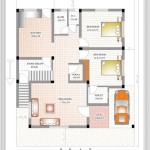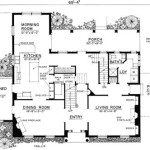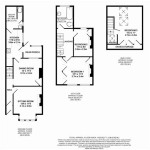Electrical Symbols for Building Plans: A Comprehensive Guide
When planning a building's electrical system, using standardized electrical symbols on building plans is crucial for conveying design intent and ensuring clear communication among professionals. These symbols represent various electrical components and serve as a visual language to depict circuits, outlets, switches, and other essential elements.
Importance of Electrical Symbols
Electrical symbols play a pivotal role in understanding and interpreting building plans. They allow architects, engineers, contractors, and electricians to:
- Convey design intent: Symbols clearly indicate the location and type of electrical equipment and devices required.
- Facilitate communication: A common set of symbols ensures consistent understanding and minimizes errors.
- Simplify installation: Electricians can easily identify and locate electrical components based on symbols.
- Ensure safety: Proper use of symbols helps prevent hazards by indicating the presence of electrical circuits and equipment.
Types of Electrical Symbols
Electrical symbols cover a wide range of electrical components, including:
- Power outlets: Represented by circles or rectangles with lines indicating the number of outlets.
- Switches: Depicted by various symbols, such as circles or squares with lines indicating single-pole or three-way switches.
- Light fixtures: Represented by circles or squares with different symbols to indicate ceiling, wall, or recessed lighting.
- Circuit breakers: Symbolized by rectangles or squares with lines representing the circuit's amperage.
- Transformers: Illustrated by coils or rectangles with arrows indicating the direction of power flow.
Interpreting Electrical Symbols
Interpreting electrical symbols requires familiarity with their standard representations. Each symbol comprises two parts:
- Graphical representation: The shape or outline of the symbol.
- Symbol label: Letters or numbers that provide additional information about the component.
For instance, a circle with the letter "R" represents a single-pole receptacle, while a square with the number "15" indicates a 15-amp circuit breaker.
Standards for Electrical Symbols
To ensure uniformity and accuracy, several organizations have developed standards for electrical symbols, including:
- American National Standards Institute (ANSI): ANSI/IEEE Std 315-1993 provides guidelines for electrical and electronic drawings.
- International Electrotechnical Commission (IEC): IEC 60617-4 defines international symbols for electrical diagrams.
- National Fire Protection Association (NFPA): NFPA 79 provides standards for electrical symbols used in the United States.
Using symbols that adhere to these standards ensures consistency and clarity in electrical design.
Conclusion
Electrical symbols are an essential aspect of building plans, enabling architects, engineers, contractors, and electricians to convey electrical design intent effectively. By understanding and using standardized symbols, these professionals can ensure clear communication, simplify installation, and promote electrical safety.

House Electrical Plan Diagram Symbols Blueprint

Image From Http Mewe Co Wp Content Uploads 2024 04 Good Architectural Floor Plan Symbols With Plans Electrical Layout

Floor Plan Symbols And Abbreviations To Read Plans Foyr

Electrical Symbols Images Browse 1 329 553 Stock Photos Vectors And Adobe
Create An Electrical Plan Roomsketcher Help Center

Electrical And Telecom Plan Symbols

Electrical Symbol Floor Plan Symbols How To

Electrical Symbols For Architectural Drawings Print My

House Electrical Plan Diagram Symbols

Free House Wiring Diagram Edrawmax








